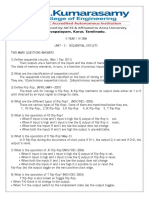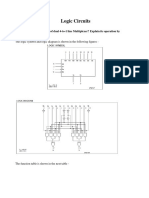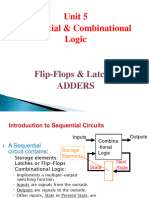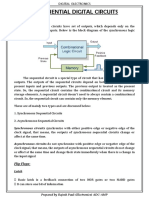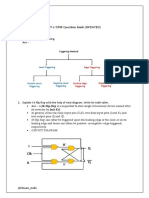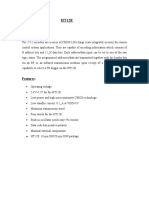0% found this document useful (0 votes)
5 views22 pagesDM Qa
The document provides detailed information about the 8085 microprocessor, including its 16-bit registers, interrupt priorities, and various operations such as binary and Gray code conversions. It also covers applications of flip-flops, types of shift registers, and the architecture of the 8085 microprocessor, including the function of the flag register and addressing modes. Additionally, it discusses the differences between combinational and sequential circuits, the problems associated with JK flip-flops, and the design of counters.
Uploaded by
palsubhrajit44Copyright
© © All Rights Reserved
We take content rights seriously. If you suspect this is your content, claim it here.
Available Formats
Download as PDF, TXT or read online on Scribd
0% found this document useful (0 votes)
5 views22 pagesDM Qa
The document provides detailed information about the 8085 microprocessor, including its 16-bit registers, interrupt priorities, and various operations such as binary and Gray code conversions. It also covers applications of flip-flops, types of shift registers, and the architecture of the 8085 microprocessor, including the function of the flag register and addressing modes. Additionally, it discusses the differences between combinational and sequential circuits, the problems associated with JK flip-flops, and the design of counters.
Uploaded by
palsubhrajit44Copyright
© © All Rights Reserved
We take content rights seriously. If you suspect this is your content, claim it here.
Available Formats
Download as PDF, TXT or read online on Scribd
/ 22
















